You are here
Tour to Fergana and Rishtan.

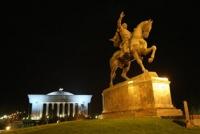

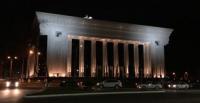
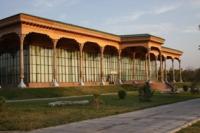
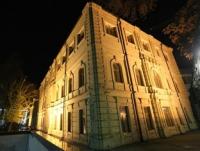


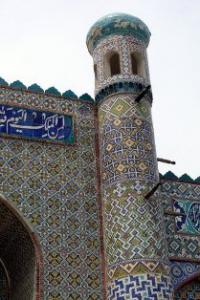

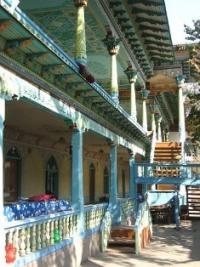

Tours to the Fergana Valley.
“In books I have traveled, not only to other worlds, but into my own”
Anna Quindlen.
Short description of a route of a tour to the Fergana Valley:
Tashkent - Fergana - Margilan, Rishtan - Kokand - Tashkent - Samarkand - Bukhara - Khiva - Tashkent.
Distance of the route: 1064 km.
Season: from April 10 to October 30.
The best time for an excursion: May, June, August, September.
Duration of the tour: 12 days, 11 nights.
The detailed program of a tour day after day from Tashkent to Kokand and Margilan:
Tour from Fergana to town of Osh.
Day 1. Tashkent.
Arrival in Tashkent, meeting at the airport, transfer to hotel, accommodation. Free time, overnight.
Day 2. Tashkent.
Breakfast. Visit of the Old city, is the religious center of Tashkent here - the Hast-Imam complex. Among unique exhibits of old Tashkent, the well-known Koran of the Caliph Osman (VIIth century) an initial source of the sacred book of Islam is stored here. Visit in the architectural and cultural Hast-Imam complex, madrasah Barack khan, Tillya-Sheikh mosque, the mausoleum Abu Bakr Kaffal Shashi, Islamic institute of a name of the Imam of al Bukhari.
Transfer the oldest market of the city - Chorsu, walk on a market. Lunch. After visit and sightseeing of the Old city, a trip by the Tashkent subway to the central part of Tashkent. In 1973 construction of the Tashkent subway began. Since 1977 the subway - only, at that time, in Central Asia works in the capital, Today the subway has three lines - Chilanzar, Uzbekistan and Yunusabad, 29 stations. Total length of lines makes 35 km.
Visit of the areas of Amir Timur and Liberty, museum of applied art. Walk on the areas. In the museum the unique exhibits telling about history of decorative art of Uzbekistan are presented. Here exhibits of work of masters of woodcarving and stamping, jewelers and masters of gold sewing. After the excursion transfer for dinner. Return to hotel and overnight.
Day 3. Tashkent - Fergana - Margilan - Rishtan - Ok Er district of the settlement - Kokand (100 km).
Early breakfast. Transfer to the airports, departure to Fergana flight of HY 087, at 7.30, arrival in Fergana at 8.25. A meeting at the airport, transfer to the park of Ahmad Al-Fergani (6 km), walk on the park.
After walk on the park transfer: Fergana - Margilan (13 km). Arrival in Margilan, visit of madrasah Said Ahmad-hodzhi. This madrasah of the monastic cell is employed with workshops of handicraftsmen who are engaged in production of silk and carpets.
Walk on a local market. Visit of the Margilan silk factory "Edgorlik", it is possible to see process of production of silk fabrics with a traditional pattern here "ikat". On Thursday or Sunday it is possible to visit the Kumtepinsky market, it is the largest market of the Fergana Valley. The end of an excursion in Margilan. A lunch at local restaurant.
Transfer: Margilan - settlement of Rishtan (47 km). Arrival in Rishtan, visit of a potter's workshop of the famous ceramist Rustam Usmanov, potter's works of Rustam are exhibited at the largest exhibitions. Since the IXth century Rishtan was famous for ceramic products. For 1100 masters from generation to generation transfer know-how pottery from local grades of red clay and natural mineral dyes glaze and ashes of mountain plants.
Here we will see the small one-storey, cozy house of Rustam Usmanov. Walls of the house are decorated with lyagan (dishes), skillfully painted teapots, drinking bowls, braids are placed everywhere.
In a far corner of the yard the workshop is located.
Here, on a potter's wheel, the pottery which after drying, becomes covered with glaze is fabricate, and then burns in the furnace. In the museum of ceramics in the house Rustam-aka works of masters of the XVIII - XIX centuries, pottery of modern ceramists are presented. On the big dish executed by the remarkable master, Leonid Galkin, an inscription the Arab ligature: "The person dies, and his affairs remain".
At desire it is possible to visit a workshop of Nazirov Alisher who heads school of traditional ceramics. At local school the museum of ceramics is open. Here the ceramics from the different areas of Uzbekistan is collected: Rishtan, Gizhduvan, Urgut, Tashkent, Samarkand, Khorezm. For persons interested are offered the 5-day program of training in pottery with accommodation at Rishtane.
Transfer in district of the settlement Ok Er (3 km). Visit of the house of the Kyrgyz family of weavers of Bakhrom-aka, a family of weavers produce woolen carpets of handwork.
Further transfer: district of the settlement Ok Er - Kokand (37 km). Arrival in Kokand, transfer to hotel, accommodation, dinner and overnight.
Day 4. Kokand - Tashkent (232 km).
Breakfast. An excursion across Kokand, visit of the palace of Hudoyar Khan (XIXth century), the palace was built by the Kokand khan, impresses with bright paints, the light glazed facade and composition of arches and minarets. Visit of madrasah Norbutabey (XVIII in), this most unique among all operating religious institutions of Kokand.
The madrasah functioned at the time of the Soviet Union. Dzhuma visit the mosque (XIXth century), Dzhuma mosque, is the main Friday mosque, being supported by 98 wooden columns brought from India. Finishing of the mosque is inlaid with a thin Fergana carving and painted in bright, traditional colors.
Visit of the mausoleum of Modari Khan (XIXth century), the mausoleum was intended for women of a khans sort. Visit of the mausoleum Dakhma Shokhon (XIXth century), it the "khans tomb" decorated with the Kokand and Fergana pictures, Bukhara clay and the Khivan carving.
After the end of an excursion, transfer: Kokand - settlement of Khanabad - Pass Kamchik (79 km). The stop on the picturesque pass Kamchik (2267 meters above sea level), the pass Kamchik connects the Fergana Valley to other part of Uzbekistan.
Further transfer: Pass Kamchik - Angren reservoir - town of Angren - town of Akhangaran - Tashkent (153 km). After the pass Kamchik we is passed the industrial towns of Angren and Akhangaran. Arrival in Tashkent, transfer to hotel, accommodation, dinner and overnight.
Day 5. Tashkent - Samarkand.
Breakfast. At 7.15 transfer to the railway station. The high-speed train "Afrosiyab" goes from Tashkent to Samarkand at 10.10. Transfer by train to Samarkand, arrival to the railway station of Samarkand, a meeting at the station. An excursion across Samarkand. Visit: Ulugbek observatory, Doniyor Paygambar (prophet Daniil) mausoleum (XIV, the beginning of the XXth century), the museum of history of the town at the ancient settlement Afrosiab (VIIIth century BC), the mosque Hazrati Hyzr (XIXth century), the mausoleum Shakhi-Zinda complex (the XI - XV century). A lunch and a dinner in local cafes or restaurants. Overnight.
Day 6. Samarkand.
Breakfast. Visit: the mausoleum Gur-Emir (the XVth century), ensemble of monuments on the square Registan from Ulugbek madrasah (the XVth century), Cher Dor madrasah and Tillya-Kari (the XVIIth century), the mausoleum Rukhabad ("Monastery of Spirit") (the XIV - XV century) - the sheikh's tomb Burkhan ad-Din Sagardzhi (the head of Muslims in Beijing) buried according to its will in Samarkand. Visit of the mosque by Bibi-Hanum (XVth century, Siab market. A lunch and a dinner in local cafes or restaurants. Overnight.
Day 7. Samarkand - Bukhara (196 km).
Breakfast. Transfer: Samarkand - settlement of Hartang (24 km). Arrival in the settlement of Hartang, transfer to a memorial complex of the Imam Al Bukhari. Muhammad ibn Isma’il Abu Abdallah al-Djufi al-Bukhari - outstanding Sunni theologian, titled "imam, a leader of Muhaddithes" and "amir, sultan of science about hadiths". Imam al-Bukhari was born in Bukhara in 810H. He devoted himself to studying of hadiths - legends about the Prophet.
Being under 15, al-Bukhari had already known by heart the most authoritative works of that time. Having taken hadj in youth, al-Bukhari stayed in Hidjaz.
Further transfer: settlement of Hartang - settlement of Kattakurgan - a caravanserai Rabat Malik (77 km). Walk on a caravanserai. XI century Near Kermine. Large "king" caravan serai on the medieval road from Bukhara to Samarkand. Only a portion of the main facade, but excavations revealed the entire layout of the building. In its southern half - the three economic courtyard surrounded by stables, storage and other outbuildings, in the north - two yards from the premises, and in the center - the grand octagonal room, circled the square of the arcades, domed ceilings which were based on round pillars.
Building wall material - raw, ceilings, pillars and paneling the walls - burnt brick. The portal of the main facade is decorated with ornamentation of hewn bricks, its walls (now unpreserved) designed corrugations, the towers at the corners are topped with lanterns. The interior of the central hall was used carved pieces with color.
Transfer: Rabat Malik - settlement of Kyzyltepa - Bukhara (95 km). Arrival in Bukhara, a lunch at local restaurant. Visit of a complex ensemble of Lyabi-House (XVIIth century), madrasah of Chor-Minor, madrasah Nodir Divan Begi (XVIIth century), madrasah Kukeldash (XVIth century), Magoki Attari (XVIth century), Ulugbek madrasah (XVth century), madrasah Abdul Aziz (XVth century), trade domes. An architectural complex of Poi-Kalon, including a minaret (XIIth century) - highest in Central Asia, and mosque (XVth century) operating with madrasah Arab Miri (XVIth century), madrasah of the Emir Alim-Hang (XIVth century), constructions Currents (the house of handicraftsmen).
Architectural complex Registan, fortresses of the Arc (XVIth century), complex of Bolo-House (XVIIIth century). Visit of the most ancient monument in Uzbekistan - Ismail Samani mausoleum (IX - X century) - tombs of a dynasty of governors of Bukhara, the mausoleum Chashma-Ayub (XIVth century), mosques Chor Minor. A lunch and a dinner at local restaurants. Overnight.
Day 8. Bukhara (41 km).
Breakfast. Continuation of an excursion in Bukhara. A trip to Bagautdin Nakshbandi mausoleum the center of a Sufi award of Nakshbandi (12 km). After visit of the mausoleum of Nakshbandi transfer to the country residence of the Bukhara emir of Sitora-and-Mosi Hosa (1911) (16 km), then transfer and visit of the necropolis Chor-Bakr which is in the settlement of Sumitan in the West in the suburb of Bukhara (13 km). A lunch and a dinner at local restaurants. Overnight.
Day 9. Bukhara - Khiva (454 km).
Breakfast. Transfer: Bukhara - town of Gazli - Kyzyl Kum Desert - settlement of Uch-Uchak (269 km). Transfer to Khiva through the Kyzyl Kum Desert. A stop at the settlement of Uch-Uchak, a picnic lunch-boxes.
Further transfer: settlement of Uch-Uchak - town of Tortkul - town of Beruni - town of Urgench - town of Khiva (185 km). Arrival in Khiva, transfer to hotel, accommodation, dinner. Evening walk on ancient monuments. Overnight.
Day 10. Khiva.
Breakfast. An excursion across Khiva - "The museum under the open sky". Visit: fortress Ichan-Kala (VIII - XIX century), Pakhlavon Mahmoud mausoleum (XVIII - XIX century) - the main cult center Ichan-Kala, is constructed in honor of the patron saint of Khiva, the poet, the philosopher, the doctor and the invincible fighter Pakhlavan Mahmoud, a minaret and the mosque Khodja Islam (the beginning of the XXth century) - the highest minaret (57 meters with the base) and the smallest madrasah in Khiva. A lunch at local restaurant.
Continuation of an excursion across Khiva, visit of a complex of Allakulikhan, madrasah, Tim (the covered market) and a caravanserai (XVIIIth century), madrasah Hurdzhum (XVIIth century), madrasah Abdullah of Khan (XIXth century), the palace Tash-Khauli (19th century) - the palace of the khan with throne and judicial halls and a harem, Zhuma the mosque and a minaret (the XII - XX century) - a roof of the mosque support 212 carved columns, thanks to unique construction this most cool place in Khiva, with magnificent acoustics, minaret Height - 32, 5 meters.
Visit of the mausoleum Said Alauddina (XIVth century), madrasah Mahomed Amin of Khan (XIXth century) - the biggest medieval madrasah of Khiva, a minaret Kalta Minor (XIXth century) - the highest minaret in the Muslim world which height had to reach 70 meters remained not complete at the height of 26 meters, a citadel of the Kunya Ark (XIXth century) - internal fortress with office buildings, a powder workshop, the courthouse and the mosque, madrasah of Shirgazi of the khan (XVIIIth century). Dinner and overnight.
Day 11. Khiva - Tashkent (41 km).
Breakfast. Transfer: Khiva - Urgench (airport) (41 km). A departure at 9.35 to Tashkent flight of HY 052, arrival in Tashkent at 11.05. A meeting at the airport, transfer to the city. A lunch at local restaurant. Sightseeing tour.
Visit of the park of Alisher Navoi and madrasah Abdul Kassim where settles down the center of handicraftsmen, here it is possible to buy souvenirs with woodcarving, a tiny list on caskets and on silk paper. Visit of madrasah Kukeldash old madrasah in Tashkent, visit of the mosque of Zhuma, the third largest Friday mosque in Uzbekistan. Visit of a monument "Courage", National cohesion Square of the people, the Broadway - the avenue of artists.
Visit of a monument Amir to Timur in the city park of Amir Timur, a memorial of "Memory of the victims of repressions". Visit of the Center of pilaf, in the Center of pilaf five masters, and also several assistants who cook pilaf work. Pilaf is cooked by 11 o'clock.
In Uzbekistan pilaf can be eaten during a lunch. Pilaf begins to be cooked with morning in the yard of the Center of pilaf in five enormous pig-iron cauldrons coppers (coppers contain 50 kilograms of rice everyone) on firewood. A sightseeing tour across Tashkent. Return to hotel, dinner and overnight.
Day 12. Tashkent.
Transfer to the airport, departure from Tashkent.
Note:
Author program of Alexander Petrov. Copying and introduction - from the sanction of the author petrovsra@mail.ru
Alexander Petrov
photos.







